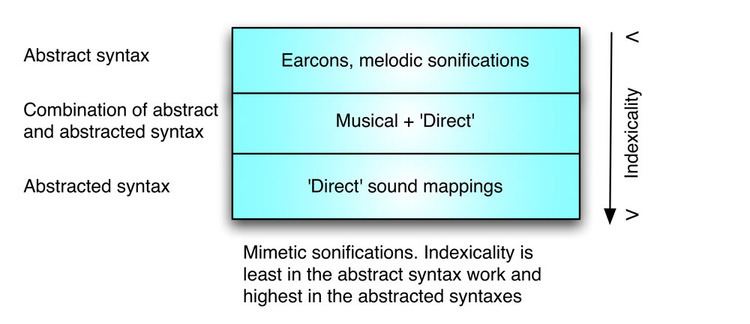 | ||
Virtual prototype direction finder sonification levels
Auditory display is the use of sound to communicate information from a computer to the user. The primary forum for exploring these techniques is the International Community for Auditory Display (ICAD).
Contents
- Virtual prototype direction finder sonification levels
- Psychoacoustic auditory display for surgeons
- Types of auditory display
- Benefits and limitations
- References
Psychoacoustic auditory display for surgeons
Types of auditory display
Benefits and limitations
Auditory display enables eyes-free usage for blind users (via a screen reader) as well as sighted users who are using their eyes for other tasks. A rapid detection of acoustic signals and the omnidirectional feature of the sense of hearing can contribute to the effectiveness of an auditory display even when vision is available.
On the other hand, sound output may interfere with other acoustic signals, such as speech communication. This complicates the use of auditory displays for certain applications. Furthermore, acoustic output may be annoying or distracting.
